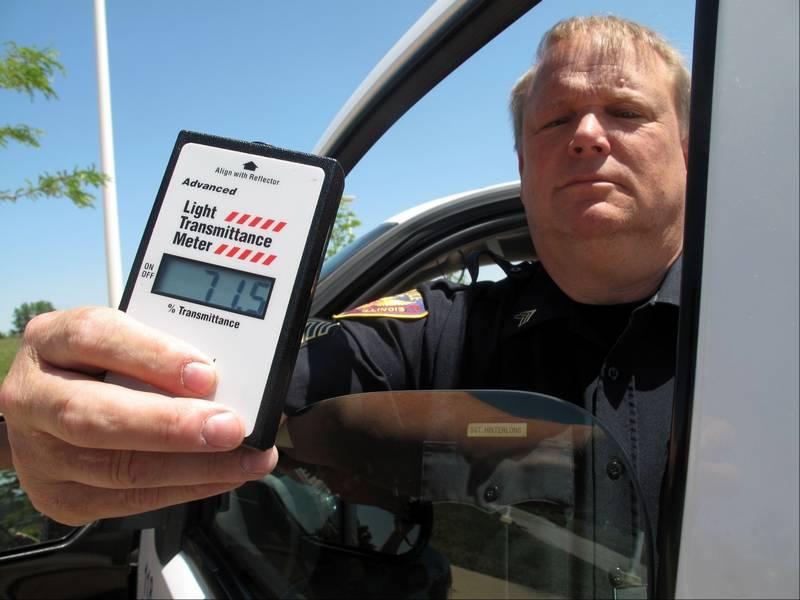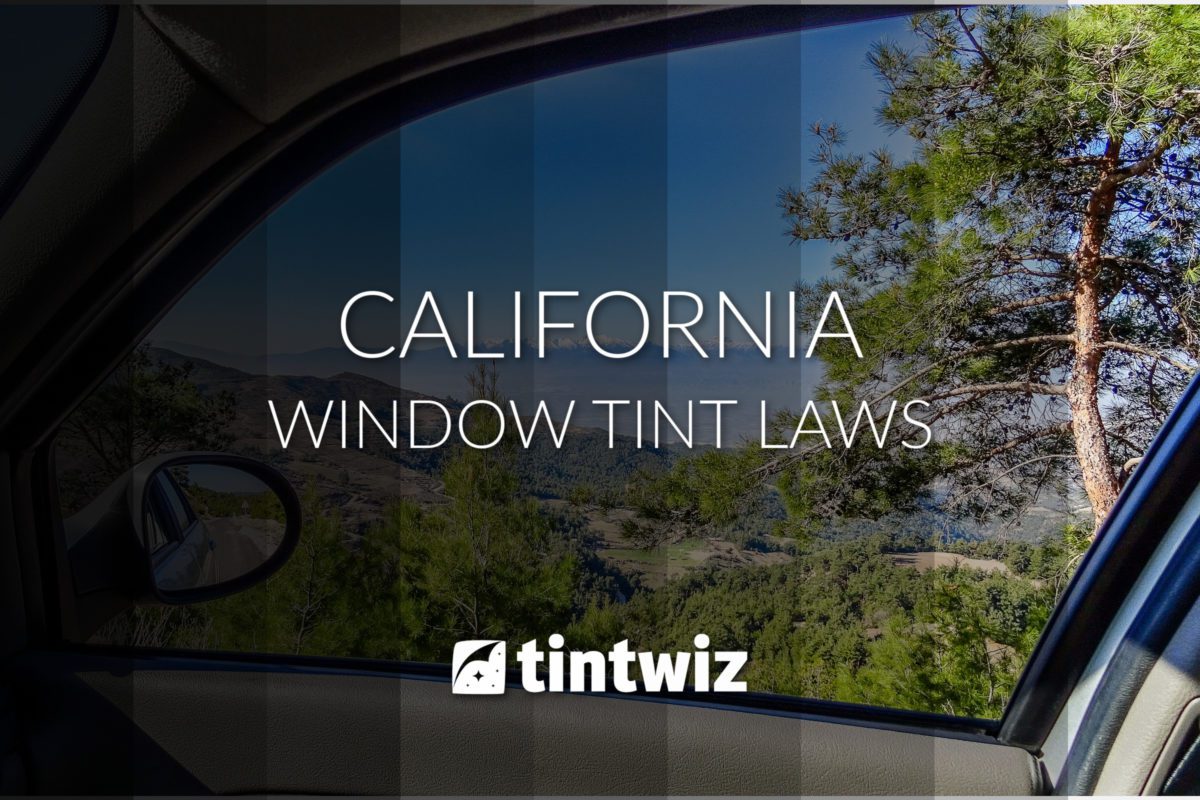As an Amazon Associate, I earn from qualifying purchases
Car tinted windows are popular in California. They offer privacy and block sunlight.
But what does the law say about them? Understanding California’s car tinted windows law is important. It helps you avoid fines and ensures safety. California has specific rules for window tinting. These laws cover how dark the tint can be and where it can be applied.
Knowing these regulations helps car owners make informed choices. This blog will explain the key points of the law. It will guide you through the dos and don’ts of window tinting in California. Whether you want to tint your windows for style or comfort, this information is essential. Stay informed and drive legally with our detailed guide on California’s car tinting law.
Legal Tint Percentage
Understanding the legal tint percentage in California is crucial for car owners. The law specifies how dark or reflective your tinted windows can be. This ensures safety and compliance with state regulations. Below, we break down the legal tint percentages for different windows in your car.
Front Side Windows
California law mandates that front-side windows must allow more than 70% of light in. This means the tint should not be very dark. It ensures that drivers can see the road. Also, law enforcement can see inside the vehicle.
Back Side Windows And Rear Window
The regulations for backside windows and the rear window are more relaxed. You can use any darkness of tint on these windows. This provides privacy for passengers and btheir elongings. However, the car must have dual side mirrors.
| Window Type | Legal Tint Percentage |
|---|---|
| Front Side Windows | 70% VLT or more |
| Back Side Windows | Any darkness |
| Rear Window | Any darkness (with dual side mirrors) |
Adhering to these tint laws ensures your vehicle is compliant. It also helps in avoiding fines or penalties. Always check for updates on the legal tint percentage, as regulations may change.
Exemptions
Understanding the exemptions for car tinted windows in California is crucial. These exemptions allow certain individuals and vehicles to have tinted windows legally. Let’s explore the different types of exemptions available.
Medical Exemptions
Some individuals qualify for medical exemptions due to health conditions. These conditions make them sensitive to sunlight. If you have a medical condition, you can apply for an exemption. The process involves getting a signed letter from a licensed physician. This letter should explain the medical necessity for tinted windows.
The letter must include:
- Your name and address
- The specific medical condition
- How tinting the windows will help
Once you have the letter, submit it to the Department of Motor Vehicles (DMV). Keep a copy of the letter in your vehicle at all times. This ensures you can show it to law enforcement if needed. Medical exemptions are a great way to stay safe while driving.
Commercial Vehicles
Commercial vehicles also have specific exemptions. These vehicles include trucks, vans, and buses. The law allows them to have tinted windows for various reasons. For example, to protect valuable cargo from theft.
Here is a quick overview of the exemptions for commercial vehicles:
- Trucks and Vans: Tint is allowed on rear windows. This helps protect tools and equipment.
- Buses: Tint is permitted on all windows except the windshield. This provides privacy for passengers.
- Delivery Vehicles: Tint can be used to keep packages safe from prying eyes.
It’s important to follow the specific rules for each vehicle type. Doing so ensures compliance with California law. Keep in mind that front windows and windshields have stricter rules. Always check the latest regulations to stay informed.
Enforcement And Penalties
The California car tinted windows law is strict. Drivers must follow these rules. Violating the law can lead to fines and citations. It also affects your vehicle inspection. Let’s explore these in detail.
Fines And Citations
Police officers enforce the car tinted windows law. If they see illegal tints, they can issue a citation. The first offense often results in a fine. The typical fine ranges from $25 to $200. Repeat offenders face higher fines.
| Offense | Fine |
|---|---|
| First Offense | $25 – $200 |
| Second Offense | $100 – $250 |
| Third Offense | $200 – $300 |
Police may also give a “Fix-it” ticket. This means you must remove the illegal tint. You must then prove it to the authorities. Failing to comply can lead to more penalties.
Impact On Vehicle Inspection
The car tinted windows law affects your vehicle inspection. Illegal tints may cause your car to fail inspection. This can delay your registration process. Removing the tint and passing inspection is required.
If your car fails due to tints:
- Remove the tint.
- Get the car inspected again.
- Pass the inspection to complete registration.
Non-compliance affects your car’s insurance too. Some insurers may raise rates. Others may refuse coverage. Staying within legal limits helps avoid these issues.
Applying For A Tint Exemption
Tinted car windows provide privacy and protection from the sun. In California, the law regulates how dark your car’s windows can be. There are special cases where you may need a tint darker than the law allows. This is where a tint exemption comes in. Let’s explore how you can apply for a tint exemption.
Required Documentation
To apply for a tint exemption, you need specific documents. A medical certificate is necessary. This certificate should explain why you need the darker tint. It must be signed by a licensed medical professional. This can be a doctor or an optometrist.
You also need a copy of your vehicle registration. Ensure it is up-to-date. This verifies that the car is legally registered in your name. Without these documents, your application cannot proceed.
Application Process
The application process is straightforward. First, gather all required documents. Then, visit the California Department of Motor Vehicles (DMV) website. Download the tint exemption application form.
Fill out the form with accurate information. Attach your medical certificate and vehicle registration. Submit the form and documents to the DMV. You can mail it or deliver it in person. Wait for the DMV to review your application. You will receive a response within a few weeks.
If approved, you will get an exemption letter. Keep this letter in your car at all times. It proves that you are legally allowed to have tinted windows darker than the standard limits.
Comparing Tint Laws With Other States
Understanding car tint laws in California can be complex. Each state has different rules. Knowing these differences helps drivers stay compliant. Let’s compare California’s tint laws with other states.
Stricter Vs. Lenient States
California has strict tint laws. The front side windows must allow more than 70% of light in. Rear side and back windows can have any darkness. States like Arizona are lenient. They allow darker tints on front side windows. New York is strict like California. Their front side windows must let in at least 70% of light.
Impact On Interstate Travel
Traveling between states with different tint laws can be confusing. A car legal in California might not be in another state. Drivers should check local tint laws before traveling. This avoids fines and trouble with law enforcement. Staying informed is key for a smooth journey.

Credit: www.californiacarlaws.com
Safety And Visibility Concerns
California has strict laws regarding car tinted windows. These laws prioritize safety and visibility. Understanding these concerns is key to complying with the law. Let’s explore the impact on night driving and law enforcement concerns.
Impact On Night Driving
Night driving requires clear visibility. Tinted windows can reduce how much light enters the car. This can make it harder to see in low-light conditions. The California law limits how dark you can tint your windows. This ensures drivers can see well at night.
Too dark tints can cause accidents. Drivers may not see pedestrians or other vehicles. This is especially true in poorly lit areas. Proper visibility is vital for safe driving at night.
Law Enforcement Concerns
Law enforcement officers need to see inside vehicles. This helps them assess potential threats. Heavily tinted windows can hide illegal activities. This makes it harder for officers to do their job. The law aims to balance privacy and safety.
Officers must see if drivers and passengers are wearing seat belts. They also need to check for suspicious behavior. Legal tint limits help officers perform these tasks more effectively.
Here is a brief overview of the tint limits in California:
| Window | Allowed Tint Level |
|---|---|
| Front Side Windows | 70% light transmission |
| Back Side Windows | Any tint of darkness |
| Rear Window | Any tint of darkness |
Following these rules ensures safety and compliance with the law. It helps maintain visibility and aids law enforcement.
Choosing A Legal Tint
Choosing a legal tint for your car windows in California can be tricky. The state has specific rules about the darkness and reflectiveness of tinted windows. Knowing these rules helps you avoid fines and ensures safety on the road.
Consulting Professionals
Consulting a professional tinting service is smart. They know California’s tint laws inside and out. These experts can guide you in selecting the right tint that complies with legal requirements. They ensure the tint is applied correctly and safely.
Avoiding Common Mistakes
Avoid common mistakes by understanding the rules. One mistake is choosing a tint that is too dark for front windows. California law requires the front side windows to allow more than 70% of light in. Another mistake is applying a reflective tint. The law prohibits more than a certain level of reflectiveness. Always check the latest regulations before choosing your tint.

Credit: www.cartintlaw.com

Credit: tintwiz.com
Frequently Asked Questions
What Is The Legal Tint Limit In California?
In California, the front side windows must allow more than 70% of light in. The rear and back side windows can have any darkness.
Are There Medical Exemptions For Window Tint In California?
Yes, California allows medical exemptions for special tinting. This typically applies to people with specific medical conditions requiring protection from the sun.
Can You Get Fined For Illegal Window Tint In California?
Yes, you can get fined for illegal window tint. The fines vary but usually start from $25 and can increase with repeated offenses.
How Can You Check If Your Tint Is Legal In California?
Use a tint meter to measure the Visible Light Transmission (VLT) of your windows. Ensure it meets the state requirements.
Conclusion
Understanding California’s car tinted windows law is important. It helps avoid legal issues. Follow the guidelines to ensure compliance. Properly tinted windows offer many benefits. They provide privacy and protect against UV rays. Ensuring your car meets the law keeps you safe.
Stay informed and drive with confidence. Always check for updates on the law. This way, you stay ahead and avoid fines. Keep your car’s tint within legal limits. Safety and peace of mind are key.
As an Amazon Associate, I earn from qualifying purchases


